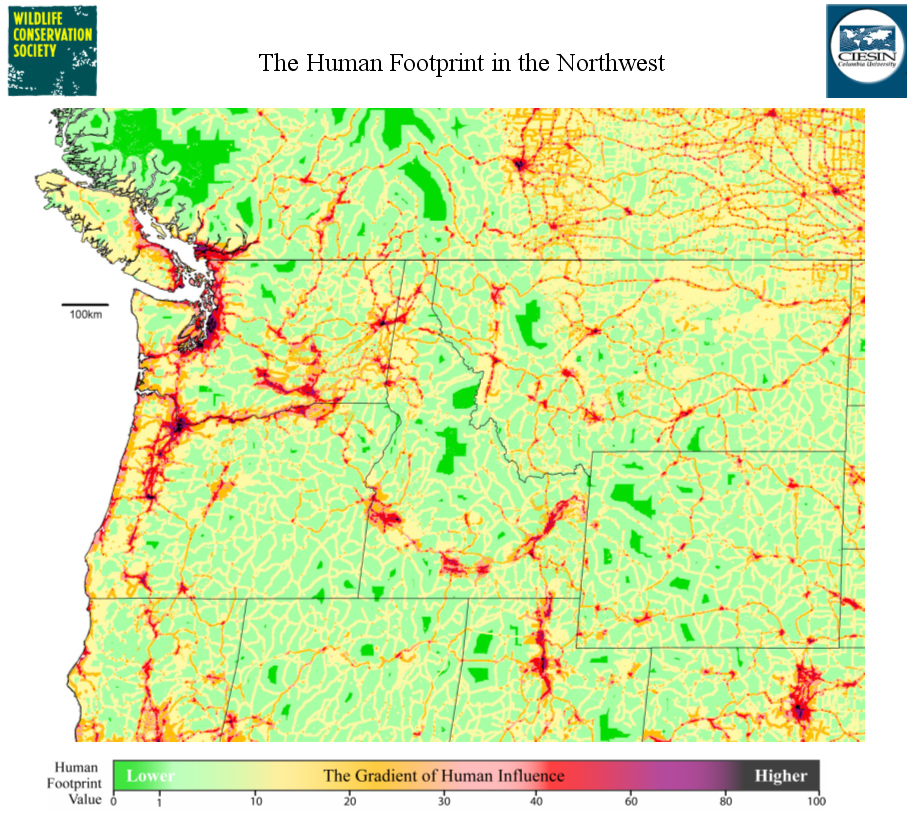‘Human footprint’ to increase with repeal of roadless rule
mongabay.com
May 5, 2005
The Bush administration’s repeal a Clinton-era policy that banned road construction in nearly 60 million acres of wilderness will likely increase the ‘human footprint’ on pristine wildlands in the United States.
Today the Bush administration repealed a federal rule that banned road construction, logging and other development in some 58.5 million acres of roadless public land. The new rule gives individual states an expanded role in determining the future of the remaining roadless areas of the country’s national forests.
The decision immediately opens some 34.3 million acres to road construction, while the other 24.2 million acres will require new management plans from the U.S. Forest Service before the start of road construction and commercial activities.
State governors have 18 months to petition the U.S. Forest Service to lift or keep in place restrictions outlined by existing management plans. The U.S. Secretary of Agriculture will have the final word on whether the governors’ petitions are accepted or rejected.
Supporters of the now repealed law say it provided crucial protection for some of the nation’s remote and unspoiled wilderness areas and is one of the more important conservation rules in recent times. The original Roadless Area Conservation Rule was put into effect in January 2001 during the final days of the Clinton administration.
Environmentalists are concerned that roads will open the nation’s last remaining wild places to development.
Dr. Eric Sanderson, a scientist with the Wildlife Conservation Society, has developed a scientific mapping exercise called the Human Footpint that specifically looked at roadless areas in both the U.S. and overseas. Sanderson found that the most important contributor to human influence at the global scale is roads.
“Roads are terrific at providing human access to areas, but unfortunately they bring with that access a host of ecological problems,”.according to public comments from Sanderson. “Roads contribute direct mortality to wildlife through roadkill, are conduits for the introduction of new species to an area, and modify the hydrological conditions of watercourses that pass by them. Roads are also the key to resource extraction of all kinds; meat, timber, minerals and non-forest products are all conveyed out of wildlands on roads. Finally roads introduce sounds and sights largely incompatible with a wilderness experience, and though ‘inventoried roadless areas’ as such are not wilderness in a legal sense, roadlessness is an essential ingredient in wilderness. Wilderness areas provide spiritual and religious value beyond solely their physical values expressed in economic, moral and ecological terms.”
Sanderson continues, “Roadless areas are a globally precious commodity, having ecological values that are not replicable in areas with roads. They are even more precious in the United States, which is poor in wilderness on a global standard. Because these areas are so precious globally and nationally, they deserve nation-wide protection and attention. Much like the monetary supply, homeland security and foreign policy — these areas are too important to open Pandora’s box of localized exceptions that the proposed interim rule would allow.”
“The development of the United States historically and the recent reverses and advances of environmental policy have left the US with a global deficit of wilderness, especially in the lower 48 states,” laments Sanderson.
To learn more about Sanderson, the Human Footprint, and related projects, take a look at the following links:
- The Human Footprint – Wildlife Conservation Society.
- The Human Footprint – Images from NASA.
- Sanderson E. W., M. Jaiteh, M. A. Levy, K. H. Redford, A. V. Wannebo, and G. Woolmer. 2002. The human footprint and the last of the wild. Bioscience. 52(10):891-904. (PDF file, 1.7 MB)
- Human “Footprint” Seen on 83 Percent of Earth’s Land from National Geographic News

